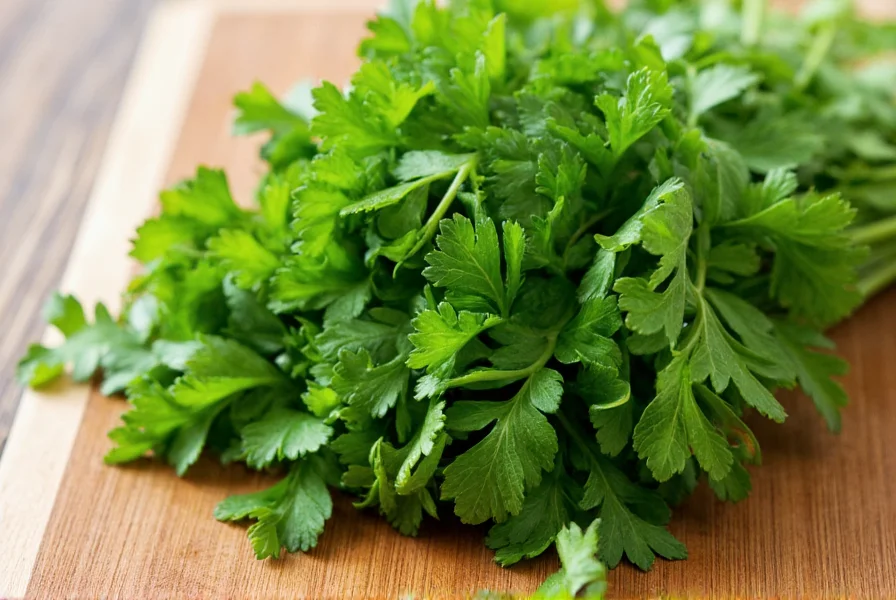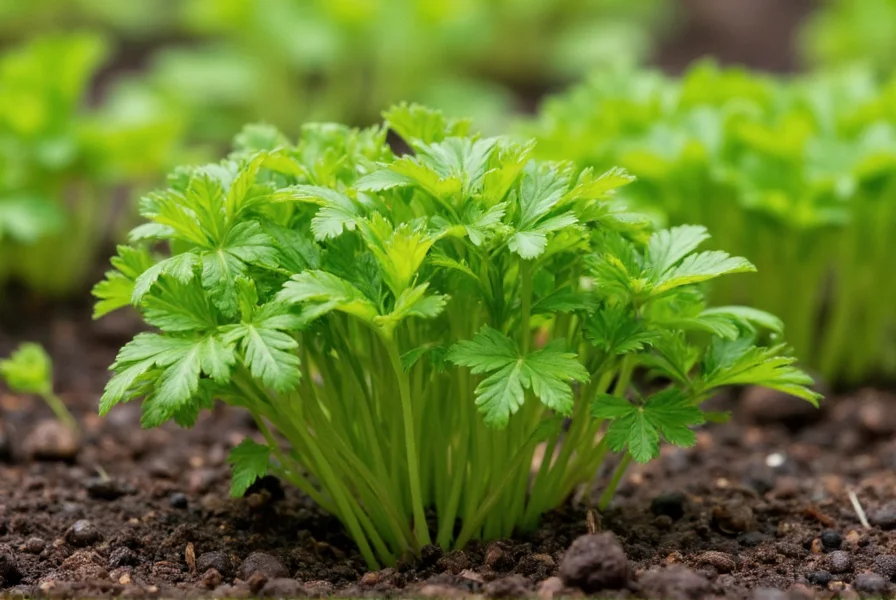When you encounter the term salsinha in recipes or menus, you're looking at the Portuguese name for what English speakers know as parsley. This culinary staple plays a vital role in Lusophone cooking traditions, particularly in Brazil where it's considered essential in many traditional dishes.
Understanding Salsinha: More Than Just Parsley
While salsinha translates directly to "parsley," it specifically denotes the curly-leaf variety rather than the flat-leaf Italian parsley. This distinction matters because the two varieties have different flavor profiles and culinary applications. Curly-leaf parsley (salsinha) has a milder, more delicate flavor compared to the robust taste of flat-leaf parsley.

Culinary Applications of Salsinha
In Brazilian cuisine, salsinha appears in countless dishes. Chefs use it as both a flavoring agent and garnish. You'll find it chopped fresh in:
- Moqueca (Brazilian seafood stew)
- Vinaigrettes and marinades
- Farofa (toasted cassava flour side dish)
- Temperos (seasoning blends)
- Cozido (Brazilian boiled meat and vegetable stew)
Unlike cilantro which loses its flavor when cooked, salsinha maintains its fresh taste even after brief cooking, making it versatile for both raw and cooked applications.
Salsinha vs Cilantro: Key Differences
| Characteristic | Salsinha (Parsley) | Cilantro |
|---|---|---|
| Leaf Shape | Curly, ruffled edges | Flat, sawtooth edges |
| Flavor Profile | Mild, slightly peppery | Strong, citrusy, soapy (to some) |
| Cooking Stability | Holds flavor when cooked | Loses flavor quickly with heat |
| Common Uses | Garnish, stews, seasoning blends | Salsas, ceviche, raw applications |
Many people confuse salsinha with cilantro due to their similar appearance, but their flavors differ significantly. The genetic variation that causes some people to perceive cilantro as soapy doesn't affect how they experience salsinha.
Nutritional Benefits of Salsinha
Beyond its culinary value, salsinha offers impressive nutritional benefits. A quarter cup of fresh salsinha provides:
- More than 100% of your daily vitamin K requirement
- Nearly 50% of your daily vitamin C needs
- Significant amounts of vitamin A and folate
- Antioxidants like flavonoids and carotenoids
These nutrients support bone health, immune function, and cardiovascular wellness. Unlike many herbs used purely for flavor, salsinha contributes meaningful nutritional value to dishes.
Growing Your Own Salsinha
Cultivating salsinha is straightforward for home gardeners. The plant prefers:
- Well-drained soil with moderate fertility
- Partial to full sun exposure
- Regular watering without waterlogging
- Cooler temperatures (it struggles in extreme heat)

Start seeds indoors 8-10 weeks before the last frost or plant directly in spring. Harvest leaves when plants reach 6-8 inches tall, taking outer stems first to encourage continued growth. Salsinha typically behaves as a biennial, providing harvests through one growing season before bolting.
Proper Storage Techniques
To maximize freshness, treat salsinha like cut flowers:
- Trim the stems
- Place in a glass with an inch of water
- Cover loosely with a plastic bag
- Store in the refrigerator
- Change water every two days
This method keeps salsinha fresh for 1-2 weeks. For longer storage, chop and freeze in ice cube trays with water or olive oil, or dry the leaves for later use in seasoning blends.
Common Salsinha Substitutes
When salsinha isn't available, consider these alternatives:
- Flat-leaf parsley (closest substitute, though stronger)
- Celery leaves (for texture and mild flavor)
- Chervil (delicate anise-like flavor)
- Young spinach leaves (in cooked applications)
Avoid substituting cilantro unless specifically desired, as its distinct flavor profile differs significantly from salsinha's milder taste.
Frequently Asked Questions
Is salsinha the same as parsley?
Yes, salsinha is the Portuguese word for curly-leaf parsley. It specifically refers to the curly variety rather than flat-leaf Italian parsley, though both are types of parsley (Petroselinum crispum).
Can I substitute cilantro for salsinha?
While possible in some recipes, cilantro makes a poor substitute for salsinha due to its stronger, citrusy flavor that many describe as soapy. Cilantro also loses its flavor quickly when cooked, unlike salsinha which maintains its fresh taste.
What dishes commonly use salsinha?
Salsinha features prominently in Brazilian cuisine including moqueca (seafood stew), farofa (toasted cassava side dish), temperos (seasoning blends), and cozido (meat and vegetable stew). It's also used in Portuguese soups, stews, and as a garnish for grilled meats.
How do I store fresh salsinha properly?
Store fresh salsinha like cut flowers: trim stems, place in a glass with water, cover loosely with a plastic bag, and refrigerate. Change water every two days. This method keeps it fresh for 1-2 weeks. For longer storage, freeze chopped leaves in ice cube trays with water or oil.
What are the nutritional benefits of salsinha?
Salsinha provides significant amounts of vitamins K, C, and A. A quarter cup offers over 100% of daily vitamin K, nearly 50% of vitamin C, and notable folate. It also contains antioxidants like flavonoids and carotenoids that support bone health, immune function, and cardiovascular wellness.










 浙公网安备
33010002000092号
浙公网安备
33010002000092号 浙B2-20120091-4
浙B2-20120091-4